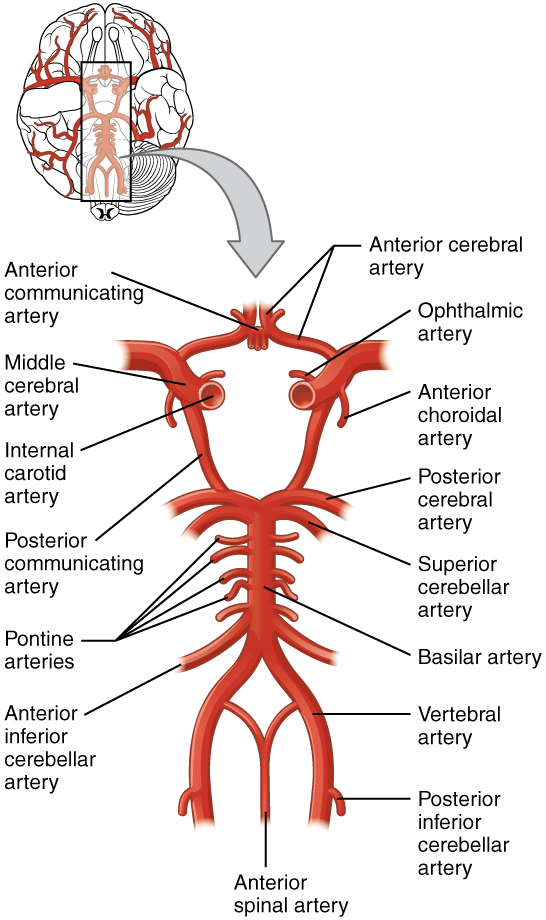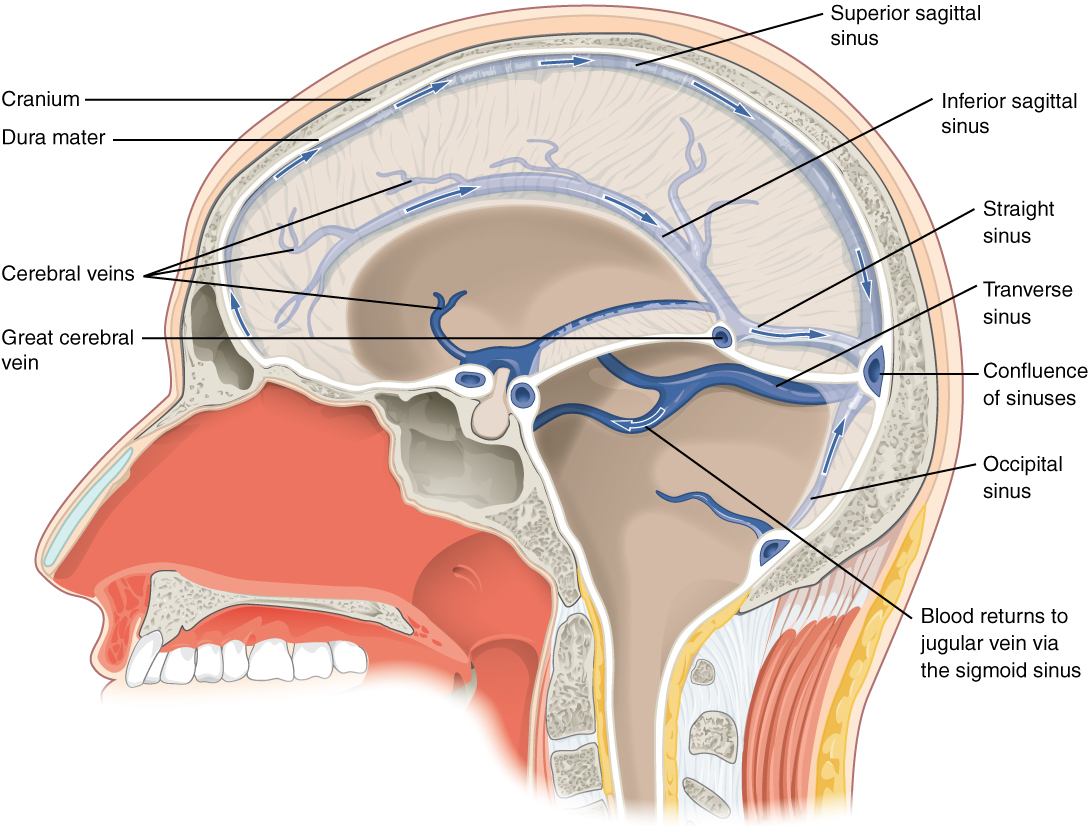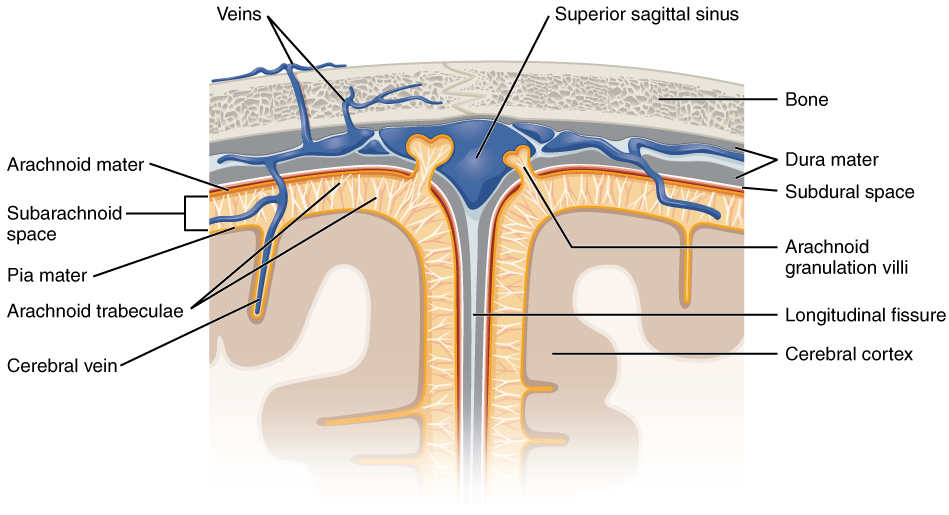| << Chapter < Page | Chapter >> Page > |

Watch this animation to see how blood flows to the brain and passes through the circle of Willis before being distributed through the cerebrum. The circle of Willis is a specialized arrangement of arteries that ensure constant perfusion of the cerebrum even in the event of a blockage of one of the arteries in the circle. The animation shows the normal direction of flow through the circle of Willis to the middle cerebral artery. Where would the blood come from if there were a blockage just posterior to the middle cerebral artery on the left?
After passing through the CNS, blood returns to the circulation through a series of dural sinuses and veins ( [link] ). The superior sagittal sinus runs in the groove of the longitudinal fissure, where it absorbs CSF from the meninges. The superior sagittal sinus drains to the confluence of sinuses, along with the occipital sinuses and straight sinus , to then drain into the transverse sinuses . The transverse sinuses connect to the sigmoid sinuses , which then connect to the jugular veins . From there, the blood continues toward the heart to be pumped to the lungs for reoxygenation.

The outer surface of the CNS is covered by a series of membranes composed of connective tissue called the meninges , which protect the brain. The dura mater is a thick fibrous layer and a strong protective sheath over the entire brain and spinal cord. It is anchored to the inner surface of the cranium and vertebral cavity. The arachnoid mater is a membrane of thin fibrous tissue that forms a loose sac around the CNS. Beneath the arachnoid is a thin, filamentous mesh called the arachnoid trabeculae , which looks like a spider web, giving this layer its name. Directly adjacent to the surface of the CNS is the pia mater , a thin fibrous membrane that follows the convolutions of gyri and sulci in the cerebral cortex and fits into other grooves and indentations ( [link] ).

Like a thick cap covering the brain, the dura mater is a tough outer covering. The name comes from the Latin for “tough mother” to represent its physically protective role. It encloses the entire CNS and the major blood vessels that enter the cranium and vertebral cavity. It is directly attached to the inner surface of the bones of the cranium and to the very end of the vertebral cavity.

Notification Switch
Would you like to follow the 'Anatomy & Physiology' conversation and receive update notifications?